All about aspen wood
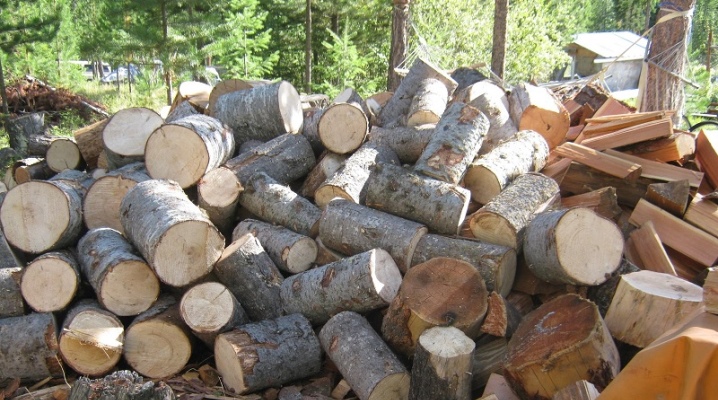
Aspen firewood is an inexpensive consumable material, which is used not only to kindle and heat stoves and fireplaces, but also to clean chimneys from soot and soot. What are the pros and cons do they have? How do they differ from firewood from other types of wood? How to properly heat the stove with them?
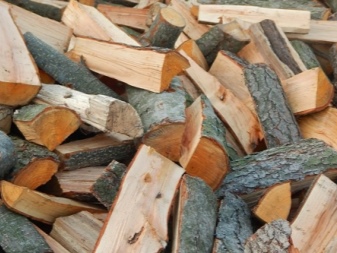
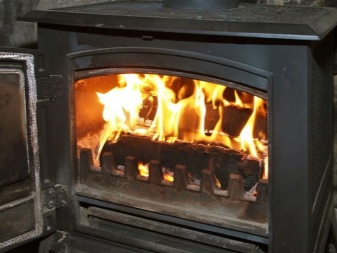
Advantages and disadvantages
Aspen is a deciduous tree that is ubiquitous in regions with temperate and cold climates located in the countries of Asia and Europe. From time immemorial to the present day, this tree has been used for the manufacture of log cabins for wells and houses, finishing cellars and basements, arranging roofs and walls, as well as for harvesting inexpensive light firewood. It should be noted that aspen has a straight and even trunk, practically free of twigs, outgrowths and other defects. This allows you to harvest firewood from it with a homogeneous fibrous structure. Aspen wood splits easily, dries relatively quickly, almost without deforming and cracking.
It is customary to attribute the following properties to the advantages of aspen firewood:
- significantly long shelf life and shelf life (about 3 years in a dry, ventilated place);
- high flame generation during combustion;
- relative resistance to decay and fungal infection;
- no sparks and a small amount of smoke during combustion;
- a small amount of ash resulting from combustion;
- pleasant woody aroma exuded during the combustion process;
- acceptable price.
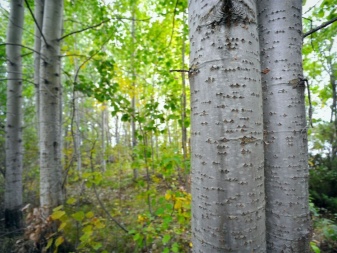
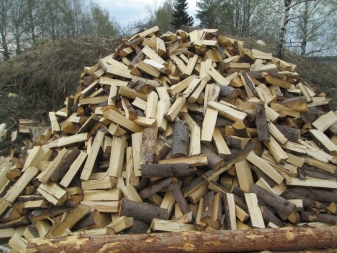
One of the important benefits of aspen firewood is that during combustion, their flame destroys soot and soot on the inner surfaces of the walls of the furnace and / or chimney. Once calcined, soot deposits fall into the combustion chamber, from where they can be easily removed. In view of this feature, aspen firewood is usually used not so much for heating stoves and fireplaces, but for cleaning chimneys and furnaces.
Due to the fact that aspen firewood, when burning, forms a high flame and leaves almost no coal, they are extremely rarely used to light barbecues and tandoor. Cooking with these structures involves the use of embers. At the same time, aspen firewood is ideal for lighting and stoking fireplaces and stoves. To this day, aspen logs are used in village baths for heating ovens heated "in black". The absence of sparks in the process of burning aspen wood makes the furnace of such stoves safer.
At the same time, aspen wood has its own specific disadvantages. It is quite soft, pliable and loose. This feature of the structure of wood determines the following disadvantages of aspen firewood:
- relatively low calorific value;
- fast combustion;
- no coal after combustion.
It is natural that in connection with the rapid burnout, the amount of consumed aspen firewood also increases, and at the same time, the costs of effort, money and time required for kindling the furnace (heating the building) increase.
In order to save money, the owners of household plots do not buy chopped aspen firewood, but round logs (untreated logs).
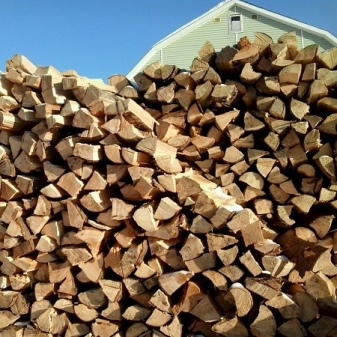
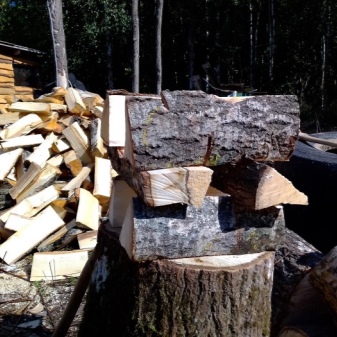
The rationality of this approach is due to the fact that many sellers sell chopped firewood at an inflated price, including an extra charge for the work done (chopping firewood). Often, the cost of chopped firewood includes a markup for stacking (the difference between the cost of stacked and loose firewood can be significant).
Aspen firewood (especially undried or poorly dried) is difficult to ignite. Signs of well-dried aspen firewood are:
- ease;
- hardness;
- easily detachable bark;
- the presence of cracks in cross sections.
The color of well-dried aspen wood is yellowish or greenish-gray (wood on longitudinal sections may look almost white). Undried aspen wood is usually creamy white, light orange or golden yellow in color. Poorly dried wood is almost always darker than dry wood. Well-dried aspen firewood makes a loud ringing sound when it hits each other. Damp and damp firewood, in turn, emit a low, dull sound. You can also determine the degree of dryness of firewood by examining the moss, which often covers the aspen bark.
If you rub such an area with your finger on a well-dried log, it will turn into airy greenish dust. In turn, the moss that appears on damp aspen logs will stain your fingers, leaving a wet green mark on them.
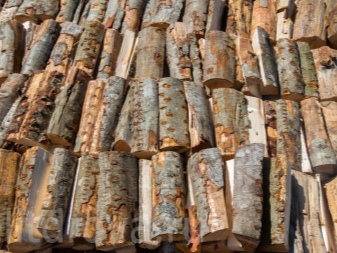
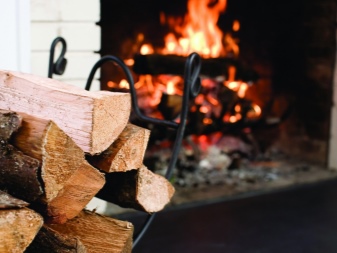
Comparison with other wood species
The greatest amount of heat during combustion is emitted by firewood from hard wood - oak, beech, hornbeam... Their heat output varies between 70-80%. According to experts, hardwood logs generate 1.5 times more heat than medium-hard and softwood logs. However, heating a house or a bathhouse with oak or beech logs is impractical due to their high cost. For this reason, most consumers use more affordable firewood from wood species such as:
- Birch;
- Pine;
- spruce;
- alder;
- aspen.
Birch firewood, in comparison with aspen or pine, emits 25% more heat during combustion. At the same time, with their constant use, deposits of soot and soot are formed on the walls of the chimney. Spruce, pine and other firewood from coniferous trees, when burning, emit a large amount of corrosive smoke and tar, which also contributes to the formation of soot in the chimneys. In addition, all conifers "shoot" with coals and sparks when burning, which requires additional fire safety measures when using them.
Aspen, like alder, unlike birch, pine and spruce, takes a long time to ignite, emits less heat during combustion and quickly burns out. At the same time, it does not emit tar, does not form a large amount of smoke, does not "shoot". The heat of the aspen logs is moderate, the smoke is weak and clean, the flame is long and even. Rising high in the furnace, the flame destroys soot deposits in the chimney. Burning aspen wood produces a small amount of ash.
Aspen logs have the longest shelf life - about 3 years. Birch, pine and spruce - stored for no more than 2 years (after this period they begin to dry out or rot).


How to properly heat the stove?
For lighting and heating stoves, aspen firewood is most often used in combination with firewood of other types of wood - birch, spruce, alder, pine (in an approximate proportion of 1: 3). With this approach, the consumption of fuel material and the time required for ignition are significantly reduced. In addition, the use of aspen firewood in conjunction with other types of wood allows not only to quickly obtain a stable and hot flame, but also to simultaneously clean the chimney during the heating process.
The sequence of actions when firing up the furnace is as follows:
- clean the combustion chamber from ash residues;
- pieces of birch bark, crumpled pieces of paper are placed in the center;
- birch or spruce chips are laid on top of paper and / or birch bark;
- half open the chimney valve;
- set fire to paper;
- close the firebox door and half open the ash pan.
After the flame has ignited, chopped aspen and birch (spruce or pine) logs are laid in the firebox in parallel at a short distance from each other.Firewood is placed in the center of the firebox or a little closer to its door. It is impossible to place logs at the rear combustion wall. There is another way to light the stove. In this case, the logs are laid in a "hut" on top of lumps of paper and birch bark, after which they are set on fire. It should be noted that in both cases, the combustion space should not be filled by more than two-thirds. When the firebox is at its maximum, the flame will ignite slowly and reluctantly.
The flame is regulated by opening / closing the chimney damper and the ash pan door. The white color of the flame and the appearance of a rumble indicate intense craving. In this case, close the ash pan door. A scarlet color of the flame indicates insufficient traction, which is increased by opening the ash pan. A pale yellow flame is considered normal. When the combustion process becomes stable, new logs are gradually added to the firebox.
It is important to take into account that aspen firewood burns out faster than others, so they are placed more often.

































































Aspen really perfectly cleans the chimney after birch.
The comment was sent successfully.